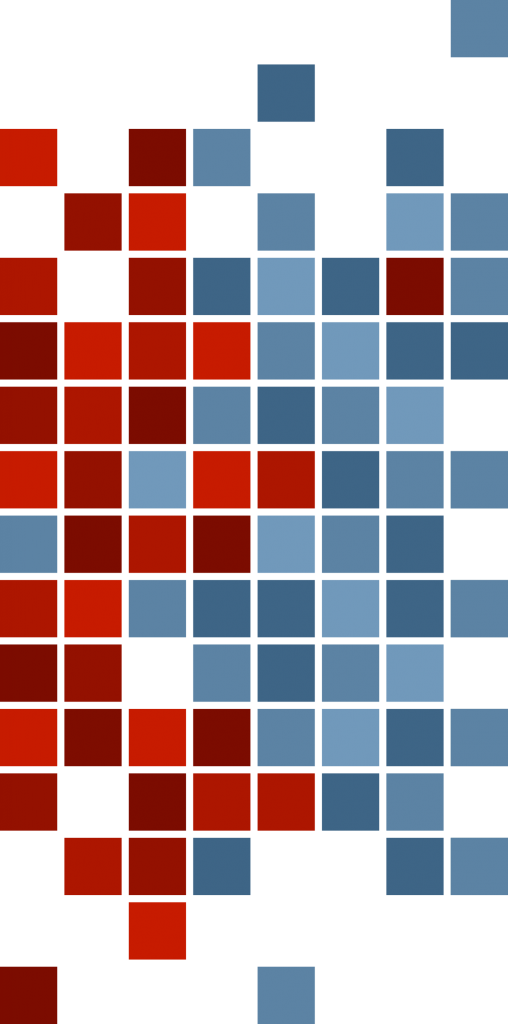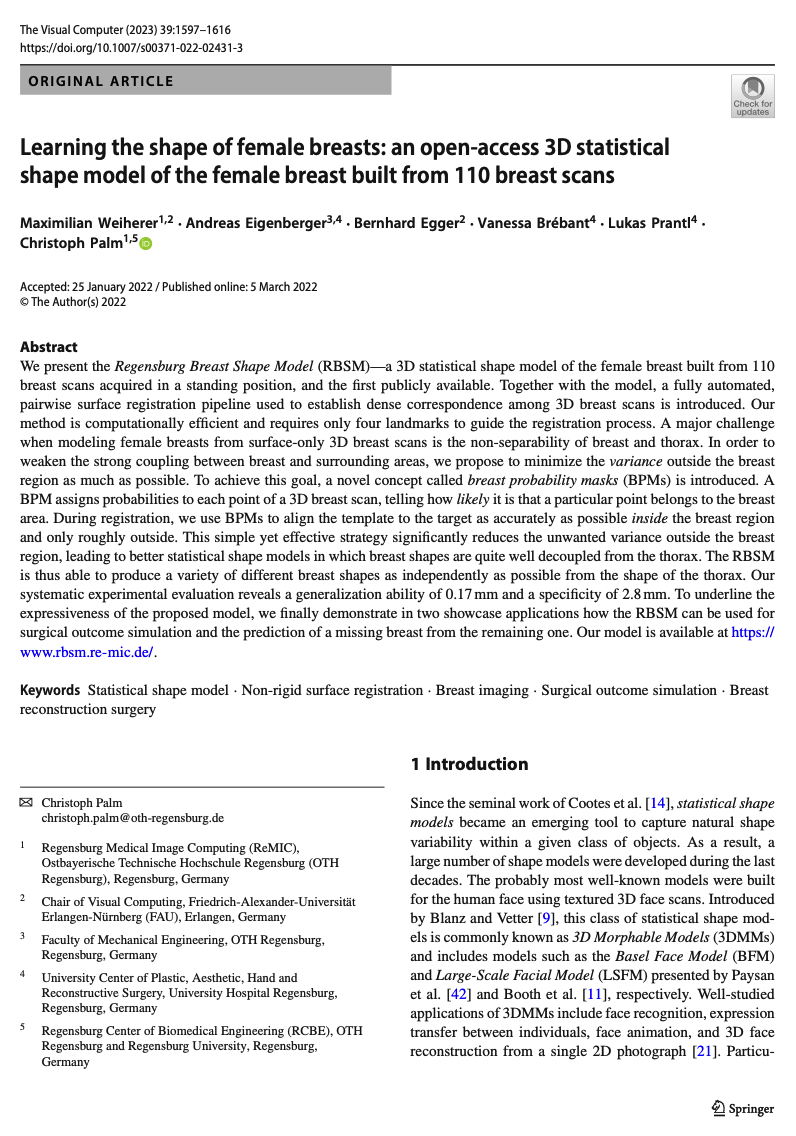Learning the shape of female breasts: an open-access 3D statistical shape model of the female breast built from 110 breast scans
Maximilian Weiherer, Andreas Eigenberger, Bernhard Egger, Vanessa Brébant, Lukas Prantl, Christoph Palm
The Visual Computer 2023

Abstract
We present the Regensburg Breast Shape Model (RBSM) -- a 3D statistical shape model of the female breast built from 110 breast scans acquired in a standing position, and the first publicly available. Together with the model, a fully automated, pairwise surface registration pipeline used to establish dense correspondence among 3D breast scans is introduced. Our method is computationally efficient and requires only four landmarks to guide the registration process. A major challenge when modeling female breasts from surface-only 3D breast scans is the non-separability of breast and thorax. In order to weaken the strong coupling between breast and surrounding areas, we propose to minimize the variance outside the breast region as much as possible. To achieve this goal, a novel concept called breast probability masks (BPMs) is introduced. A BPM assigns probabilities to each point of a 3D breast scan, telling how likely it is that a particular point belongs to the breast area. During registration, we use BPMs to align the template to the target as accurately as possible inside the breast region and only roughly outside. This simple yet effective strategy significantly reduces the unwanted variance outside the breast region, leading to better statistical shape models in which breast shapes are quite well decoupled from the thorax. The RBSM is thus able to produce a variety of different breast shapes as independently as possible from the shape of the thorax. Our systematic experimental evaluation reveals a generalization ability of 0.17 mm and a specificity of 2.8 mm. To underline the expressiveness of the proposed model, we finally demonstrate in two showcase applications how the RBSM can be used for surgical outcome simulation and the prediction of a missing breast from the remaining one.
Download the RBSM
The RBSM is available in the HDF5 file format as provided by the Scalismo framework. Besides the full model build from all 110 breast scans, we also provide the following bespoke models trained only on a subset of our database:
- an operated-only model containing the 72 operated breasts
- a non-operated-only model containing the 38 non-operated breasts
Moreover, we released a second collection of models trained on an augmented dataset which includes the mirrored versions of the 110 breast scans in our original database, leading to 220 breast scans in total. We provide the same bespoke models as above.
To download the RBSM, please carefully read the following license agreement first:
- NON-COMMERCIAL USE: The license granted is for internal, non-commercial research, evaluation or testing purposes only. Any use of the RBSM or its contents to manufacture or sell products or technologies (or portions thereof) either directly or indirectly for any direct or indirect for-profit purposes is strictly prohibited.
- NO WARRANTY: The RBSM is provided as is and any express or implied warranties are disclaimed.
- NO DISTRIBUTION: You are not allowed to sublicense or distribute the RBSM in whole or in part to any third party.
- CITATION: You agree to reference the publication
Maximilian Weiherer, Andreas Eigenberger, Bernhard Egger, Vanessa Brébant, Lukas Prantl, Christoph Palm.
Learning the shape of female breasts: an open-access 3D statistical shape model of the female breast built from 110 breast scans.
Vis. Comput. 39, pp. 1597--1616, 2023
Working with the RBSM
The RBSM is fully compatible with the Scalismo framework. Alternatively, we provide as part of the iRBSM GitHub repository Python code to (1) randomly sample from the model, and (2) perform model-based surface reconstruction by fitting the RBSM to a point cloud. Please see the examples folder within the iRBSM GitHub repository.
To simply explore the model within a viewer, we recommend using the Scalismo Viewer.
Citation
If you use the RBSM, please cite
@article{weiherer2023rbsm,
title={Learning the shape of female breasts: an open-access 3D statistical shape model of the female breast built from 110 breast scans},
author={Weiherer, Maximilian and Eigenberger, Andreas and Egger, Bernhard and Brébant, Vanessa and Prantl, Lukas and Palm, Christoph},
journal={The Visual Computer},
volume={39},
pages={1597--1616},
year={2023}
}

